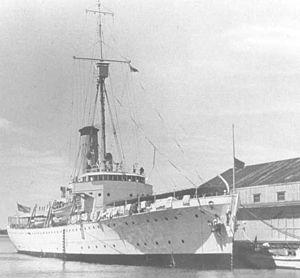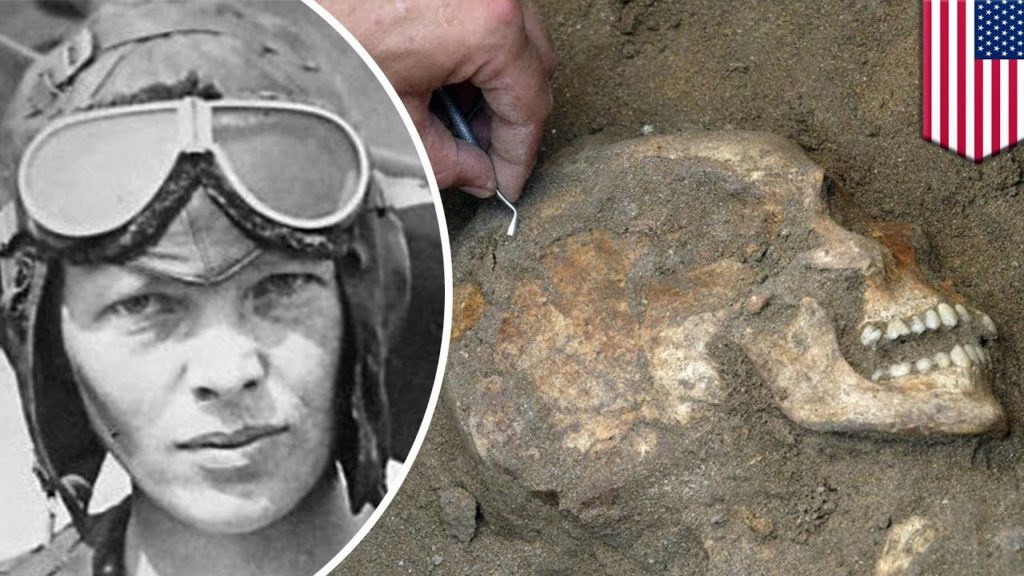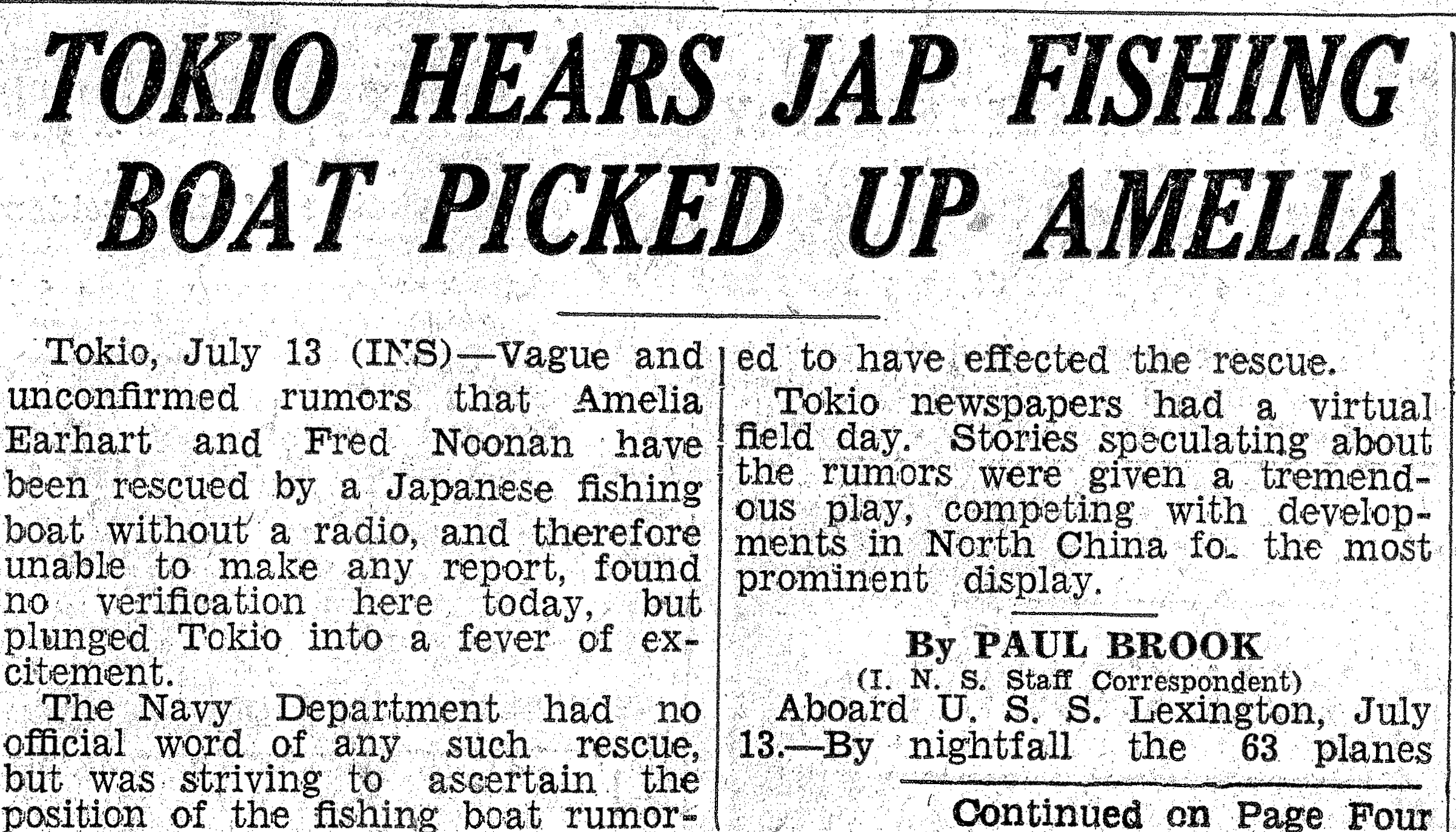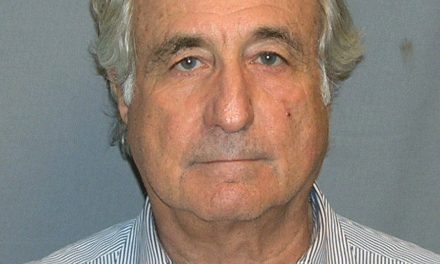Amelia Earhart
The job was open in the 1930’s, almost as if advertised in the nation’s newspapers: we need a Woman Hero of the Skies, a female Charles Lindbergh. As the 20th Century came into its own, women were no longer always on the farm, barefoot and pregnant, or in the parlor, serving tea.
The challenges of the early years of flight needed a woman with the fire and grit to punch into the sky like the most adventurous men. And a certain young woman, restless and self-confident, needed a challenge, something just beyond the horizon to be ever striving for.
Amelia Earhart stepped forward without hesitation. She took the job. Aviation, the times, and Amelia Earhart were all made for each other.
Her exploits and records spanned several years, but what the public most remembers is her round-the-world journey of July, 1937. She was close, on her last legs of the trip when her plane vanished over the Pacific Ocean on July 2. No trace of her or her navigator, no trace of the plane, was ever found.
The most common assumption, based of her radio transmissions, is that she failed to spot tiny Howland Island, her isolated target in the vast Pacific, and finally ditched at sea, out of fuel. But for years, reports would emerge from persons who were sure they heard her voice that July, in distressed radio broadcasts. Other witnesses would later emerge who swore she was captured by the Japanese, who controlled nearby islands. Entire books were written with such themes as her supposed existence, in New Jersey, as a housewife under an assumed name.
Some eighty years later, her fate is still grist for speculation. What happened to her twin-engine Lockeed Electra, what happened to the most famous female aviator of all time?
Here at MindOverMystery we’ve opened a file on Amelia Earhart. Join us as we research and explore.
The Skeptics Approach
The tragic, eternally fascinating disappearance of Amelia Earhart, over the wide-open Pacific Ocean, in July of 1937. It will be grist for mystery analysts, forever.
As we’ll discuss further in Section Four, an astonishing array of theories and allegations about the disappearance have gone into print in the intervening decades. It doesn’t quite rival the thousand books, the thousand theories, and myriad wild ideas surrounding the JFK assassination, but it manages the same amazing breadth.
But how many of those theories even make any sense? A limited number, we think. But the case is no less intriguing for that, it’s still rich with possibility.
Casual readers of newspapers and magazines would likely conclude, if anyone’s going to crack the Earhart case, it’s those hard-working folks at TIGHAR, who seem to come up with significant stuff. They’re close to nailing this thing, aren’t they? My money’s on them.
At MindOverMystery our money’s not on TIGHAR, necessarily, but they are in dogged pursuit of the mystery. You can’t call them quitters, and their leader, Ric Gillespie, even wrote one of the more coherent books on Amelia’s disappearance.
But still. What do they have, and what does your deductive reasoning ability tell you they really have?
Before we continue, interesting thoughts from a professional skeptic. That’s right, from someone who sees lots of nonsense ideas floating around, and has a website devoted to “calling bullshit,” as they say, on those kinds of assertions.
Finding Amelia EarhartPopular modern reports claim Amelia Earhart made it to an island and survived for a time. Might that be true?by Brian Dunning
Skeptoid #295
Amelia Earhart, Fred Noonan, and the Lockheed Electra, 1937
Today we’re going to point the skeptical eye at some of the rumors surrounding one of the twentieth century’s great mysteries: The disappearance of pioneering woman aviator Amelia Earhart, when her airplane disappeared over the Pacific Ocean on her famous 1937 flight around the world. Conventional wisdom says that she simply ran out of fuel and ditched into the ocean, but stories have persisted for decades that she might have made it safely to an island, perhaps even survived for some time. Here and there, various artifacts have been found: A shoe, a zipper, a scrap of aluminum. There are even some crazy stories: that she made it back to the United States and lived out her life under an assumed name, or that she was captured by the Japanese and executed as a spy. Let’s take a look to see if any of these alternate explanations can withstand scrutiny.
Amelia Earhart and her navigator, the highly experienced and esteemed Fred Noonan, were on the third-to-last leg of their circumnavigating flight in her Lockheed Electra 10E, a 1200 horsepower, state-of-the-art twin engine aircraft. They took off from Lae in Papua New Guinea on July 2, 1937, headed for a remote refueling stop in the South Pacific, a tiny island called Howland. From there they would continue to Honolulu for a final refueling before completing the journey in Oakland, California.
And as everyone knows, they never made it to Howland. A US Coast Guard cutter, the Itasca, was on station at Howland transmitting a radio direction-finding signal, and made sporadic voice contact. Most historians agree that a half-hour time zone difference disrupted both parties’ attempts to establish two-way voice communication, and a photograph of the Electra taking off from Lae appears to show that a belly antenna (of unconfirmed purpose) may not have been in place. And to top it off, it turns out that Howland’s position was misplaced on Earhart’s chart by about five nautical miles, but which would still have kept it within visual range. Whatever role these problems may have played, if any, is unknown; but Earhart’s final radio transmission to the Itasca said they were in the immediate vicinity of Howland. And ever since then, the best analysis is that they ran out of fuel, ditched in the Pacific Ocean, and perished.
But one group of historic aviation enthusiasts called TIGHAR (The International Group for Historic Aircraft Recovery) has been tirelessly promoting their hypothesis that Earhart and Noonan flew not to Howland, but by mistake to an island 650 km to the southeast, now called Nikumaroro but then called Gardner, where they crashed and survived for a time as castaways. TIGHAR’s hypothesis and claimed discoveries saturate virtually all television and print reports of Earhart for the past decade, but these media outlets almost never mention that TIGHAR’s is a fringe theory supported by poor evidence and that has almost no serious support from mainstream historians or archaeologists.
Here’s the problem with TIGHAR’s findings. Even though they meticulously document and preserve every artifact, they exhaustively research each one to find matches with real objects from the 1930s, and they look exactly like what such an expedition should look like, their overall methodology is fundamentally, fatally unscientific. It’s unscientific in that it’s done completely backwards. TIGHAR begins with the assumption that Amelia Earhart crashed, camped out, and died on Nikumaroro. They take everything they find — every anomaly in a photograph or in a story, every piece of bone or manmade artifact found on the island — and try to match it to their assumption, rather than trying to objectively assess its origin.
Nikumaroro, this tiny island where TIGHAR has recovered its artifacts, is in Kiribati, a nation of 100,000 people spread over millions of square kilometers of the South Pacific. People leaving artifacts come and go all the time. For example, pearl divers. Fleets of pearl boats have plied these waters since the 1800s. Every island and reef in the South Pacific has been visited countless times by pearl boats, who anchored, made camp on shore, and spent a few weeks free diving for oysters. Their exploits and histories have been published in dozens of books, such as Roy Miner’s 1941 volume Pearl Divers, and the many colorful tales in Frank Coffee’s 1920 book Forty Years on the Pacific. TIGHAR found evidence of campfires and fish bones on Nikumaroro and concluded “Amelia Earhart” who is not known to have visited the island; but I found no attempt made by them to exclude the pearl divers who are known to have camped there, and to have done so countless times over more than a century. TIGHAR appears to be dedicated to proving the least likely explanation for the artifacts.
Brian Dunning, skeptoid.com, January 31, 2012
Dunning continues on to puncture other alternative theories of Amelia’s demise. The website is a veritable firing range for those who like to shoot holes through theories, about all sorts of mysteries. It’s a website worth checking out.
On the fateful flight, Dunning’s strong bet: you’ll find that plane some day, bottom of the ocean, not all that far from Howland Island. They ran out of gas, and it’s no scientific mystery what happens to a heavier-than-air, heavier-than-water plane. Down the drink it goes.
Good points, that Dunning makes about scrounging up traces of evidence on remote islands and saying “See, see, these are probably traces of Amelia!”
Various debris and detritus are going to hang around on deserted islands a long time, and in a world of restless travelers even “deserted” islands will see traffic, now and again. Anything they leave remains for the next visitors to stumble over.
Is it verifiably true, though, that a jar of “freckle cream” (not an item mentioned above) was found on those islands? That narrows the field considerably, the number of women (presumably a woman) traveling the open Pacific, self-conscious about their freckles, as some say the red-haired Amelia was. Still, it’s only one item that catches the attention, and it could have come from a lot of places, tossed from a yacht, even. A point of logic: not too many fair-haired white ladies traveled those parts especially in those days, granted, but among those who did, a large percentage might have been sensitive about what so much open sea sunshine would bring out in their complexion. A percentage might be motivated to apply “freckle cream.”
We start with two sections that relate to the works of TIGHAR partly because they’re getting their name and their theories in the popular press, all the time it seems.
Do they have a public relations apparatus to die for, or are they the only ones cranking out new press releases about a perennial favorite, the Earhart case? Being in the news doesn’t make you right about your research, and doesn’t make you necessarily wrong, either.
Read on for recent article which addresses TIGHAR’s theories, indirectly.
AN INTERESTING ASSESSMENT

Amelia Earhart’s Lockheed Electra 10E. During its modification, the aircraft had most of the cabin windows blanked out and had specially fitted fuselage fuel tanks. The round RDF loop antenna can be seen above the cockpit. This image was taken at Luke Field on March 20, 1937; the plane would crash later that morning.
A thoughtful, respected publication revisited Earhart’s case recently. (Sooner or later, like death and taxes, everyone comes back to considering Earhart’s last flight.)
Ric Gillespie’s TIGHAR group gets periodic press for finding a shoe here, campfire remains there, or a sheet of old metal, perhaps we’re told from somewhere on the plane.
This article, focusing on skeletal remains, gives seeming support to the group’s basic thesis, that Earhart and Noonan perished on the Phoenix Islands far to the south of Howland. Long before the TIGHAR people were making their regular runs to the far Pacific to sniff for artifacts, an interesting assessment was done on a set of bones.
New evidence in the search for Amelia Earhart
Bones found in 1940 may have been those of the lost aviatrix
JULY 2nd of last year marked the 80th anniversary of the disappearance of Amelia Earhart, a pioneering aviatrix (pictured above), and her navigator Fred Noonan over the Pacific Ocean, as they attempted a circumnavigation of the globe in a twin-engined Lockheed Electra monoplane. The many theories about the pair’s demise, aired once more on that occasion, fall into two broad groups: they crashed into the sea and drowned, or they crashed onto Nikumaroro, a remote island, where they perished from hunger. An American forensic anthropologist has new evidence that greatly increases the likelihood of their having suffered the second fate.
Nikumaroro, one of the Phoenix Islands, is an inhospitable place and was uninhabited at the time of the Electra’s disappearance in 1937. Three years later, though, a working party found a human skull and partial skeleton there. Nearby was a part of a shoe they judged to be a woman’s, and a box manufactured in around 1918 that was designed to contain a sextant. The bones were removed to a medical school in Fiji where David Hoodless, a British doctor and anatomy teacher, measured them and concluded that they had belonged to a stocky, middle-aged male.
Latest updates
Hoodless used formulae developed by a 19th-century statistician, Karl Pearson, for calculating stature from bone length, and concluded that the castaway was five feet five-and-a-half inches (1.66 metres) tall. Pearson’s formulae are now, though, widely acknowledged to underestimate height.
****
If Hoodless was right, the remains could not have been those of the slender Earhart, whose driving and pilot’s licences gave her height as five foot seven and five foot eight respectively. Nor could they have been Noonan’s, since he was a quarter of an inch over six feet tall. But Dr Jantz concludes that in 1941, with the tools at his disposal, right is something Dr Hoodless was unlikely to have been.
Dr Jantz also describes some new research into the matter. Americans of that era differed morphologically from their modern counterparts, so he compared Hoodless’s measurements to those of the skeletons of 2,700 white Americans who died between the 19th and mid-20th centuries. He included measurements of Earhart’s own bones calculated from photographs of her. He concludes that her bones more closely resembled the castaway’s than do 99% of the reference sample.
That finding might be enough to convince those who have until now supported Hoodless’s conclusion. But it is unlikely to silence the conspiracy theorists who continue to circle Earhart’s disappearance. The truth may never be known fully. But even if those who claim she drowned succeed in explaining away the resemblance Dr Jantz has unearthed, another mystery awaits an answer. If the castaway was not Earhart, who was it?
theeconomist.com, Feb. 8, 2018
The skeptics may well be right about the Gillespie group’s circular reasoning, as in:
“How do we know that Earhart and Noonan ditched on the beach on those Islands? For heaven’s sake, look at all the signs of them, part of a sextant, a shoe, campfire remains, bleached bones.”
“How do we know those items were theirs? For gosh sake, use your head, how many other American flyers ditched in the area of those islands?”
The circle is nice and round, but the logic and science are shaky.
Still, if truly the bones upon modern re-examination are a closer match to Earhart than “99% of the reference sample” should that drive us to take another hard, look at the possibilities? Probably. And the author is right, the question’s interesting: “If not Earhart, who was it?”
But we’re stuck in a circle of questions. Why Earhart’s remains, but not Noonan’s, and indeed the largest skeleton of all, that of her Electra, where did it end up? It’s possible a crash landing at low tide, injuring Noonan, left the pilot alone on the island, and the plane and Noonan departed with the high tide. There’s even an alleged radio transmission by Amelia, referring to a banged-up navigator, that would be consistent with that scenario.
Nonetheless, a lot of things, including flying that far south on a fading level of fuel, would all have to fall into place.
Some think the Phoenix Island scenarios are reasonably plausible in the end, supported by scraps of evidence, but lots of them.
Others think it all involves long odds, like playing poker and drawing to an inside Royal Straitflush. Possible, but highly unlikely.
Next, we move away from the southern islands scenarios and look north, to possible contact with the Japanese. Some call that notion crazy, too.
The Japanese Approach
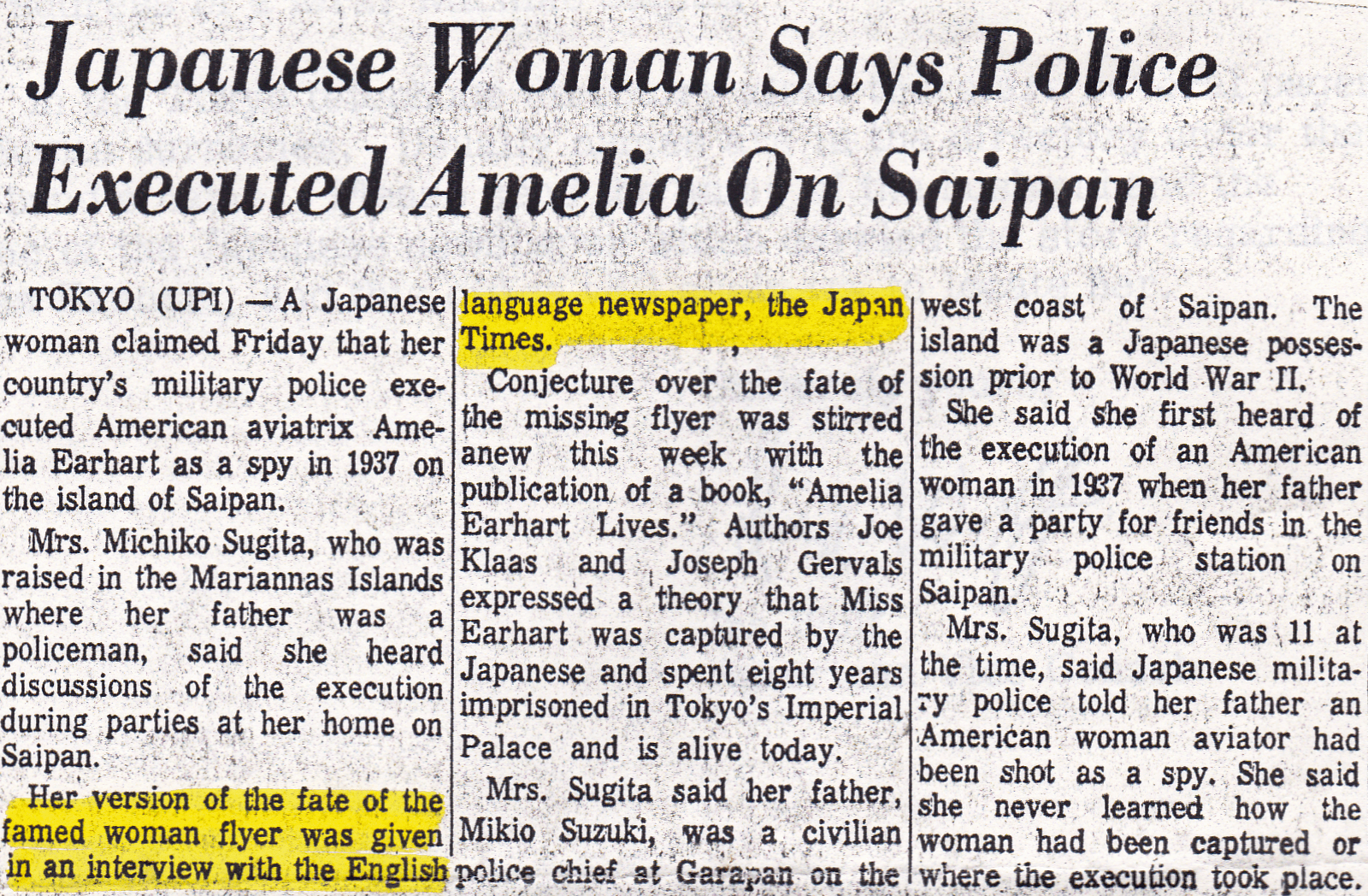
Other theorists don’t give the Phoenix Islands, TIGHAR researched scenarios a second look mostly because they find other evidence and logic overwhelming: “The Japanese got her.”
The post below from 2016 seems to jump around a bit, but it’s more substantial, and factual, than it seems. We offer it because it offers so much apparent evidence in such compact form.
 As secretary of state, Hillary Clinton backed The International Group for Historic Aircraft Recovery searches for the remains of Amelia Earhart and her Lockheed Electra 10E near a remote Pacific island.
As secretary of state, Hillary Clinton backed The International Group for Historic Aircraft Recovery searches for the remains of Amelia Earhart and her Lockheed Electra 10E near a remote Pacific island.
“Like our lost heroine, you will carry all our hopes,” Clinton said to TIGHAR.
But in the second edition of his book, “Amelia Earhart: The Truth At Last,” Mike Campbell calls TIGHAR’s search “another waste of time and money.” I agree with Campbell; the evidence is overwhelming that Earhart and her navigator, Fred Noonan, died during captivity on the Japanese-controlled island of Saipan.
Did President Franklin D. Roosevelt ask Earhart to fly off course during her 1937 around-the-world flight to try to ascertain if Japan was illegally militarizing Pacific Ocean islands?
After American Marines liberated Saipan in 1944, natives gave accounts of two white pilots, a male and a female, who were imprisoned and buried on Saipan. The natives were told by the Japanese the pilots were spies picked up in the ocean.
Manual Aldan, a dentist, heard about the Americans when he treated Japanese officers, who identified the female pilot as “Earharto.” Joaquina Cabrera, a laundress for Japanese guests and prisoners kept at a hotel, remembered the Americans.
“The lady wore a man’s clothes when she first came,” she said. “I was given her clothes to clean. I remember pants and a jacket. It was leather or heavy cloth, so I did not wash it. The man’s head was hurt and covered with a bandage, and he sometimes needed help to move. The lady was very thin and very tired. Every day more Japanese came to talk with her. She never smiled to them, but did to me. She did not speak our language, but I knew she thanked me. She was a sweet, gentle lady. I think the police sometimes hurt her. She had bruises, and one time her arm was hurt. Then, one day, police said she was dead of disease.”
In 1970, Michiko Sugita, a Japanese woman who in 1937 was the 11-year-old daughter of Saipan’s police chief, revealed Earhart was actually shot as a spy. Sugita heard military policemen say, “Amelia was so beautiful and fine a person she did not deserve execution,” but Sugita’s father explained “since she came here to carry on her duties as a spy, it cannot help that she be executed.”
Under the direction of military intelligence, American Marines disinterred the remains of two individuals they were told were from Earhart’s burial site.
Cpl. Earskin Nabers decoded the top-secret message announcing the discovery of Earhart’s plane as a radio clerk on Saipan in July 1944. A few days later, Nabers decoded the order, originating in the Oval Office, to destroy the plane. Nabers witnessed its torching by Marines. Prior to its destruction, Sgt. Thomas E. Devine noted the plane’s markings, NR16020, which proved it was Earhart’s plane.
Stanley Serzan, a Marine, saw several photos of Earhart and Noonan found on a dead Japanese officer on Saipan. Robert Wallack, another Saipan veteran, found an attache case containing “official-looking papers all concerning Amelia Earhart,” which he gave to a Navy officer.
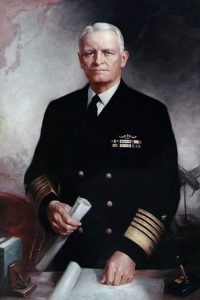 Fifty years ago, Fleet Adm. Chester Nimitz, who commanded American naval forces in the Pacific during World War II, advised Fred Goerner, author of “The Search for Amelia Earhart,” “Earhart and her companion did go down in the Marshalls, and they were picked up by the Japanese.” In 1966, Gen. Graves Erskine, deputy commander of the V Amphibious Corps during the Battle for Saipan, told news reporters, “It was established Earhart was on Saipan. You’ll have to dig the rest out for yourselves.”
Fifty years ago, Fleet Adm. Chester Nimitz, who commanded American naval forces in the Pacific during World War II, advised Fred Goerner, author of “The Search for Amelia Earhart,” “Earhart and her companion did go down in the Marshalls, and they were picked up by the Japanese.” In 1966, Gen. Graves Erskine, deputy commander of the V Amphibious Corps during the Battle for Saipan, told news reporters, “It was established Earhart was on Saipan. You’ll have to dig the rest out for yourselves.”
But for the past several decades, the news media have largely failed to accept Erskine’s challenge, focusing instead on coverage of futile searches for Earhart’s plane in the Pacific Ocean.
Japan denies knowledge of what happened to Earhart. I suspect our government knew about Earhart’s capture when it happened in 1937, and Roosevelt feared Earhart must have confessed she was part of a plan to gather intelligence about Japanese activities. Perhaps Roosevelt didn’t want the world to know Earhart had been asked to do something that put her at risk for capture by the Japanese.
Campbell believes “only a presidential order can break the airtight seal nearly eight decades of silence have molded.” I hope our next president will have the courage to issue such an order.
Daily Messenger, Joel Freedman, http://www.mpnnow.com, Aug. 23, 2016
A few of factoids above are from one journalist’s work, that of the late Fred Goerner. That opens up a path of pivotal possibilities, that is, if Goerner’s accurate and honest in all he said, and not making anything up, the case is pretty powerful.
He tracked Earhart in the Marshall Islands for years, travelled all over those territories once held by the Japanese. Witnesses by the dozens remembered seeing the man and woman flying team of Americans…and in the Japanese-held Pacific Islands, now that would have been rare. It’s hard to image which other man-woman team of Anglo aviators they might have even seen and confused for Earhart and Noonan, in that territory at that time.
For Fred Goerner, his peak moment came when a coy Chester Nimitz, the Admiral of towering responsibility and reputation who’d been in charge of naval forces in the Pacific, finally went beyond smiling hints that Goerner wasn’t wasting his time. ” ‘Now that you’re going to Washington, Fred,’ he said, ‘I want to tell you Earhart and her navigator did go down in the Marshalls and were picked up by the Japanese.’ ”
So, the Japanese got to a crash-landed Earhart and Noonan, on the edge of some atoll let’s say, before we did, and for that matter we couldn’t risk the provocation of entering Japanese-controlled regions. They assumed the worst–wondering why Americans had wandered into their seas, perhaps even finding camera equipment mounted on the plane (a longstanding suspicion). Clearly, spies looking in on our military build-up. They were taken to the headquarters of Japanese military activity in the region, the island of Saipan, where they were treated like spies, and died of either disease or execution.
Do journalists get carried away, so eager to have a story they invent or embellish conversations that never happened? Sure, they do, they stretch the truth just like anyone else. But so much that Goerner has to say across the three hundred-page chronicle of his odyssey to find Amelia’s ghost, so to speak, rings so true. And more importantly, it finds so much corroboration in so many other snippets of testimony.
Each year in Atchison, Kansas, Amelia’s birthplace, a summer festival celebrates her spirit and accomplishments. A small part of that festival involves ongoing scholarship and commentary on the mystery of her disappearance.
The year a MOMystery editor attended, there was no mystery in the mind of a Saipan-raised woman who attended one of the discussions at the local library. She stood to suggest that this group of Amelia-worshipers support the idea of a memorial to Earhart on Saipan, obviously her final resting place.
She’d been a very young girl then, this woman of Filipina descent. She hadn’t seen Earhart and Noonan herself, but it was in the air she grew up breathing. Everyone knew someone who’d seen them, or had talked to a Japanese officer who confirmed the fact that they came to Saipan as spies. In wasn’t rumor in her mind, it was fact that was too widely confirmed, too clearly the case to leave any room for doubt.
The only question was: will we build a commemorative statue to her on Saipan?
We still harbor a lingering doubt as to whether some legends, based on eye-witnesses, can stoke their own fires, can seem more like a done deal than they are. But we must say, the case for Earhart and Noonan perishing in Japanese custody seems strong.
The professional skeptics pooh-poo this scenario as well, claiming that 1937 was still a time of peace in U.S.-Japanese relations, not to be confused with four years later. They go so far as to say that the Japanese would have loved to repatriate Amelia, had they found her, for the good pubic relations value. With respect, we think that’s nonsensical thinking.
Even in 1937, the Japanese were in a sort of war with the U.S. and the great democracies, they just hadn’t done anything quite as rabid as bomb Pearl Harbor, just yet. The country’s policies were already shaped by the ultra-nationalist ultra-right, the hard-bitten Nazis of the Pacific region. And they were jockeying for territory, for oil, for resources, for strategic advantage with a United States that looked to them to be just as imperial as they were.
The Japanese would not have been amused, to put it mildly, at an American overflight of their military bases under construction in the Pacific. Nothing Earhart and Noonan could have said would have convinced Japanese authorities that the overflights were accidental, and they might well not have been.
Keep in mind that Amelia had become buddies with Eleanor Roosevelt and to a lesser extent the President himself. We can quite easily envision the ever pragmatic Commander in Chief asking Amelia for a patriotic favor–could you fly just a bit to the north on the way to Howland Island, and take a look-see at those Japanese controlled islands? Her well-documented trip gave her cover, after all, and who couldn’t stray off course over the Pacific? So much safer for the U.S. than risking a fly-over by the U.S. Air Force.
But once down short of Howland, for whatever reason, and grabbed by the Japanese, it was all over. The horrendously expensive “search” of the seas for the Earhart and Noonan wreckage was all waste and all show. At the top, in the Oval Office, they knew the score. Maybe part of the show was even an elaborate matinee for Eleanor. Did her husband dare tell her that her good friend had been sacrificed on an espionage mission gone bad, and that now the nation’s interests called for ignoring her fate?
It seems harsh to abandon her to the Japanese, but they likely would never have cut her loose. She’d seen too much.
And FDR, always thinking years ahead of the rest of us, knew that for all practical purposes we were at war with the Japanese already.
There were millions of casualties in the war to come. Amelia and Fred were merely two of the earliest sacrifices.
Ideas and Theories
A smorgasbord of ideas, and theories.
A sexy mystery like the disappearance of Amelia Earhart and her custom Electra has it all:
- An attractive redhead, complete with fresh face and freckles and an abundance of guts, in a heroine who speaks, especially to young women, through the ages.
- The new wave of flight that made anything seem possible, a wave ridden by Charles Lindbergh and Amelia Earhart with more ease and grace than anyone else.
- A spectacular last mission, on top of a career garnished by firsts, to fly all the way around the world at the Equator.
- A remarkable aircraft, faster than most of what flew those days, with Amelia in the cockpit.
- A mission nearly completed, with only three legs left to go, before she disappeared like the smoke legends are made of.
- And scattered, tantalizing clues as to her disappearance, from cryptic radio transmissions to numerous rumors, always beyond concrete reach, about the fate of the pilot and navigator.
If you were Hollywood, you couldn’t come up a better story, so of course Hollywood has adopted this one.
We’ve seen Amelia portrayed by Diane Keaton and by Hillary Swank. Both films are worth seeing, and we must say Swank especially seems to incarnate Earhart in remarkable fashion.
And back in 1943, Rosalind Russell played a thinly disguised version of the Earhart story in “Flight for Freedom.” She crashes her plane on to a Japanese island to give American reconaissance an excuse to examine the military development of the Land of the Rising Sun.
Minus the deliberate crash, could this be fiction as fact, art imitating life?
Interestingly, the more recent films just have Earhart running out of luck, and out of fuel. The idea of spying on the Japanese leading to her demise faded in recent decades, while evidence for it grew. Go figure.
All sorts of ideas creep into the consciousness which is the Earhart mystery. We know a very sweet, gracious, and intelligent older lady who once ran one of the Earhart museum sites. She’s says she’s fairly sure that an infinitely older Amelia, giving another name of course, came to see her one day, came in effect to see a museum about herself.
Isn’t it pretty to think so?
Just instinct, apparently, drove the curator’s convictions. And, at one point some people were utterly convinced that a lady named Irene Bolam was Amelia in disguise, sort of smuggled back into the U.S. under a different identity. This in spite of the fact that Bolam said no, that’s crazy, and in fact the two really don’t look all that much alike.
Of course, there’s nothing substantive, or logical or anything else to suggest any scenario under which Earhart, even if alive, could have slipped back into her old country and culture incognito.
Let’s suppose she had been spying. Further suppose she somehow survived that and was ransomed back in some way, or rescued at the end of the war. Suppose, still further, that the national security or public relations of the situation required that the real story of July, 1937 be kept under wraps. Those are all possibilities, even if you consider them faint possibilities.
Amelia’s lanky five-foot, eight inch frame, and fresh face and looks were all iconic. How could she be easily disguised? Would word of that not finally emerge?
Most Earhart experts don’t find the Amelia-survived-the-war-and-went-underground theories to rate very high, on the plausibility scale.
But the legend persists.
There are many variations on the theme, and many other themes…if you like, you could look at internet postings and YouTube videos for many long hours.
****
In the end the possibilities for the missing Lockeed Electra revolve around the Big Three:
- The Occam’s Razor explanation. Earhart and Noonan wandered around, disoriented, looking for Howland, or some place to ditch a plane running out of fuel. They never found a landing spot, there being very little land in that part of the Pacific, and a whole, whole lot of ocean.
- They were somehow so far off course to the south that when they did finally find land, it was a deserted island of the Phoenix Islands chain. Search and rescue didn’t spot what was left of them, and with no water, food, or shelter they died in short order.
- Earhart was off course, either accidentally or deliberately, to the north. Mili Atoll, in Japanese territory, was where they ditched, and when the Japanese grabbed them, their fate was sealed. U.S. authorities would not have wanted to admit that they’d lost (the extremely popular) Amelia to a foreign power, and geopolitics did not permit pursuing the matter further.
At MOMystery, we used to think (like the skeptics at skeptoid.com) that only the Occam’s Razor explanation, Earhart and Noonan down in the ocean, made any real sense. It’s still a common sense, straightforward explanation, but it’s not good sleuthing to dismiss other possibilities out of hand. We’ve begun to wonder if possibilities number two, or three don’t have something going for them.
This mystery offers the opportunity for every good analyst to sit down in front of a large map of the Pacific Ocean off the south Asian coast, and apply common sense to what little is known about Earhart’s positions as shot by her navigator, and about her other radio transmissions (assuming accurate reports of her transmissions, in some ways a large assumption).
As we discussed in Section Three, much anecdotal evidence suggests the detour (with extra fuel tanks strategically installed) over the Marshall Islands to the north. However, that would have added a lot of distance and flying time. The extra fuel could explain the distance, but…wouldn’t much of her flight over Japanese military islands have been at night, extrapolating from her departure time and the time she was heard clearly by Howland operators? You can’t get a good visual on Japanese islands, and the military development or lack thereof, in the dark.
See if you can make the espionage scenario work with fuel, headings, received transmissions, and the like.
Here at MindOverMystery, we’ll keep searching for an “elegant solution,” that is, one that takes in to account all, or almost all, of the hard and anecdotal evidence.
Who knows? One day, we may piece together enough evidence for the following scenario (with two variations):
The Electra was outfitted with extra fuel and for extra speed, with overflight of the Japanese islands in mind. In the end it was decided that full overflight, north to south through the Marshalls, was too risky for several reasons. Also, the aviation math–how to explain all that time in the air and such a late arrival–was hard to work out. So a compromise plan, Amelia was to fly over the southern portion of the Marshalls (nearest Howland Island) about dawn for a peek at a couple of islands, which would also allow more deniability in any confrontation of the great Pacific powers. “Sorry, their navigation was out of whack..Not intentional..sorry.”
But for whatever reason she had to ditch around Mili Atoll, and the Japanese were totally without humor about the incident.
Or the variation, perhaps the most likely of all…
Earhart’s fateful flight always intended to head straight for Howland–risking no intrusion into Japanese air space. The well-known radio and navigational challenges resulted in an error in course, to the north. As a lost Amelia ran low on fuel, she had to attempt a landing on one of the atolls, probably Mili. Their rescue was more of an arrest, with (an injured) Fred and Amelia taken to headquarters at Saipan, where they perished.
If, we say if, either of these variations were ever proved as truth, it would be an reasonably “elegant” solution:
- It would explain the reported transmission about a crash landing and an injured navigator, made from that atoll before the Japanese arrived.
- It would explain the litany of reports, over the years, about a tall woman aviator and her taller navigator, in Japanese custody on Saipan. (Remember, anecdotal reports of him in Japanese custody also have him banged up.)
- It would explain the apparent unease of Naval high command in discussing the episode, and corroborate Fred Goerner’s supposed conversations with Admiral Nimitz, explicitly confirming Japanese capture.
- It would be reasonably consistent with everything we know, or think we know, about the plane’s range, speed, navigational problems, transmissions, and the like.
- It would specifically, be consistent with Earhart sounding strong enough on radio to be in that part of the Pacific, and with her statement of “running north and south” in her search for land–she may have thought she was south of Howland, and encountered a Japanese atoll while moving to the north.
- It would explain why the vast search and rescue mission (of course avoiding Japanese seas) found no trace of this pilot, rumored through received transmissions to have made an emergency landing.
Now of course, the Occam’s Razor solution–down in the water–explains a disappeared Electra, as well the empty search mission.
You won’t see a plane from a ship when it’s now 16,000, maybe 18,000 feet down on the ocean floor.
But the out-of-gas-and-down solution does nothing to explain the breadth of the stories about the aviators held in Saipan, or the stories of an Electra burned, on orders from on high, after the Allies took over.
Nor is it consistent with Fred Goerner’s book, unless we write it off as the work of a journalist who lost his mind, or integrity, and started fabricating conversations.
In all, the rough landing on Mili Atoll seems to accommodate what we think we know pretty well, better than other theories.
Whats your explanation for all the phenomena, what’s your theory?
On the Trail: The Research & Thinking Never Stops
She was one of the most famous people in the world at the time, and hers was the most famous aviation mystery.
In a mostly-audio session, nearly an hour, they lead a discussion of the Earhart mystery with feedback from a wide audience. Overall, we think it’s a good review of Earhart facts and the process of evaluating evidence.
With the exception of their use of the tired, misleading phrase “conspiracy theories,” they’re good role models for mystery analysts.
The disappearance of Amelia Earhart during her around-the-world flight attempt in July 1937 provides a “teachable moment” about critical thinking and the historical method. Despite an exhaustive search, no signs of Earhart were found. The comprehensiveness of the search should have put the matter to rest. Instead, its inconclusiveness created a longstanding mystery accompanied by outlandish speculation.
Mythologizing about Earhart’s disappearance began in earnest with the appearance of Flight for Freedom (1943) a popular film that starred Rosalind Russell. Its heroine, a famous woman pilot, sacrifices herself on a trans-Pacific spying mission for the U.S. government. Later, books like Paul Briand’s Daughter of the Sky (1960) and Fred Goerner’s, The Search for Amelia Earhart (1966) contributed to the idea that the government had conspired to deceive the public about Earhart’s disappearance. Since then suggestions of a conspiracy have spread to the Internet.
Curators Tom Crouch and Dorothy Cochrane discuss the circumstances of Earhart’s disappearance and the use of critical thinking and the historical method. Students learn how historians work and learn to distinguish between historical fact and historical fancy.
Smithsonian Conference
Give us your feedback, what do you think?

